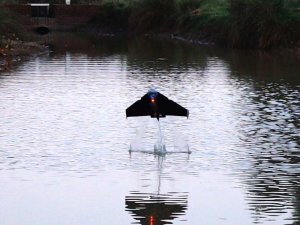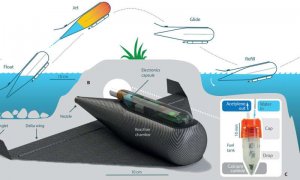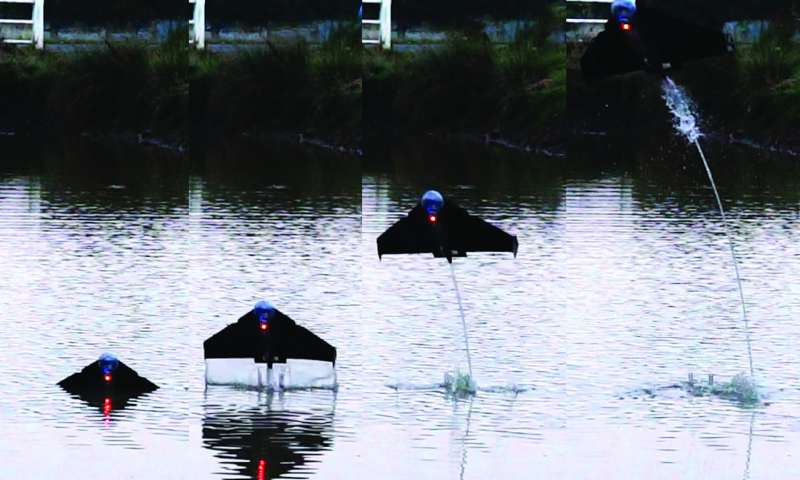A team of scientists from Imperial College London created the robot, which weighs 160 grams and can propel itself up to 26 meters into the atmosphere with a force 25 times that of its weight.
It utilizes a tiny pump to collect water from the lake or ocean in which it is submerged, which it combines in a reaction chamber to generate a burnable acetylene gas with a tiny quantity of calcium carbonate power.
Once the gas ignites and expands, the robot pushes out the gathered water in a jet and throws it into the air. After refilling its water tank, it can jump several times.

“Water-to-air transition is a power-intensive process, which is difficult to achieve on a small-scale flying vehicle that needs to be lightweight for flight,” lead researcher Dr. Mirko Kovac, Director of the Aerial Robotics Laboratory at Imperial, wrote in Science Robotics.
“We have used water-reactive chemicals to reduce the materials that the robot needs to carry. Since the chamber fills passively and the environmental water acts as a piston, we can create a full combustion cycle with only one moving part, which is the pump that mixes the water with the fuel.”
The team has partnered with the Swiss Federal Laboratories for Materials Science and Technology (Empa) to trial the robots in monitoring oceans around coral reefs and offshore energy platforms.
First author Raphael Zuffrey added: “These kinds of low-power, tether-free robots could be really useful in environments that are normally time- and resource-intensive to monitor, including after disasters such as floods or nuclear accidents.”

Scientists from Harvard developed a similar tiny robotic bee capable of flying, swimming and propelling itself out of the water and back into the air in 2017.
Due to its ability to weather different environments, the RoboBee, which measures 1 mm in length, could be used in future search and rescue missions.
The transition is made possible by small flotation devices which help to stabilize the robot on the surface of the water before an internal combustion system is triggered to propel it up into the air.


























Leave a Reply